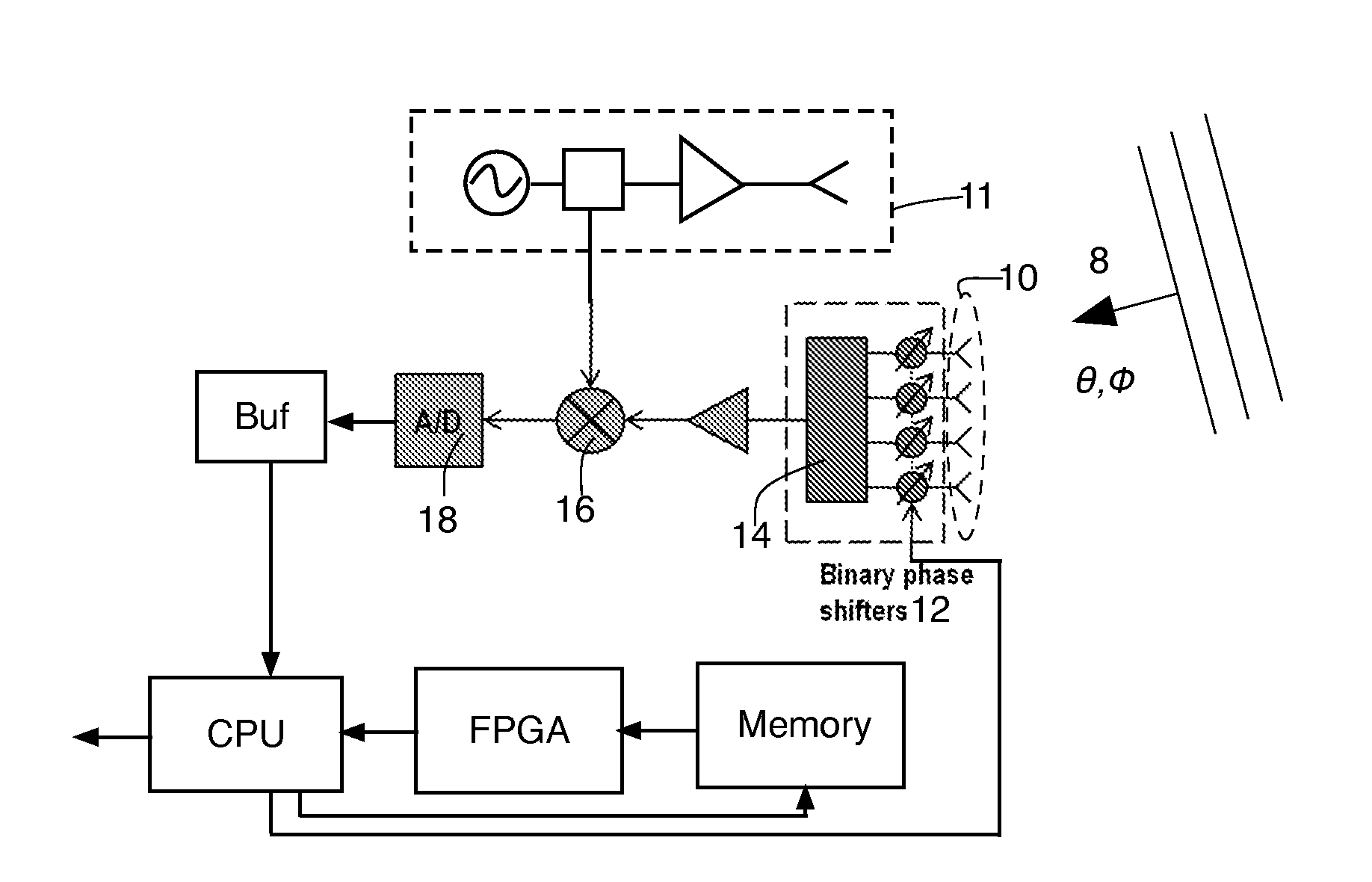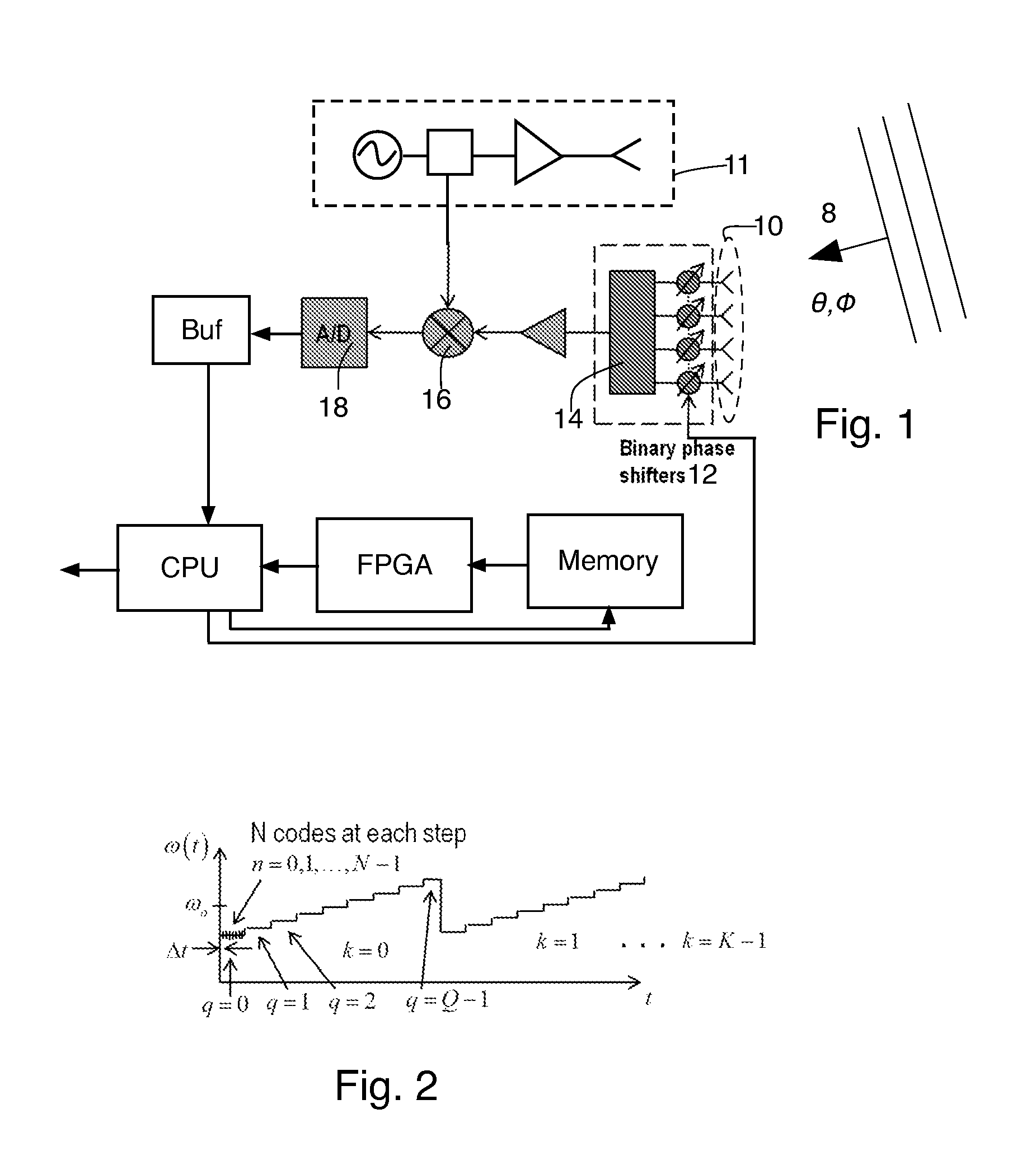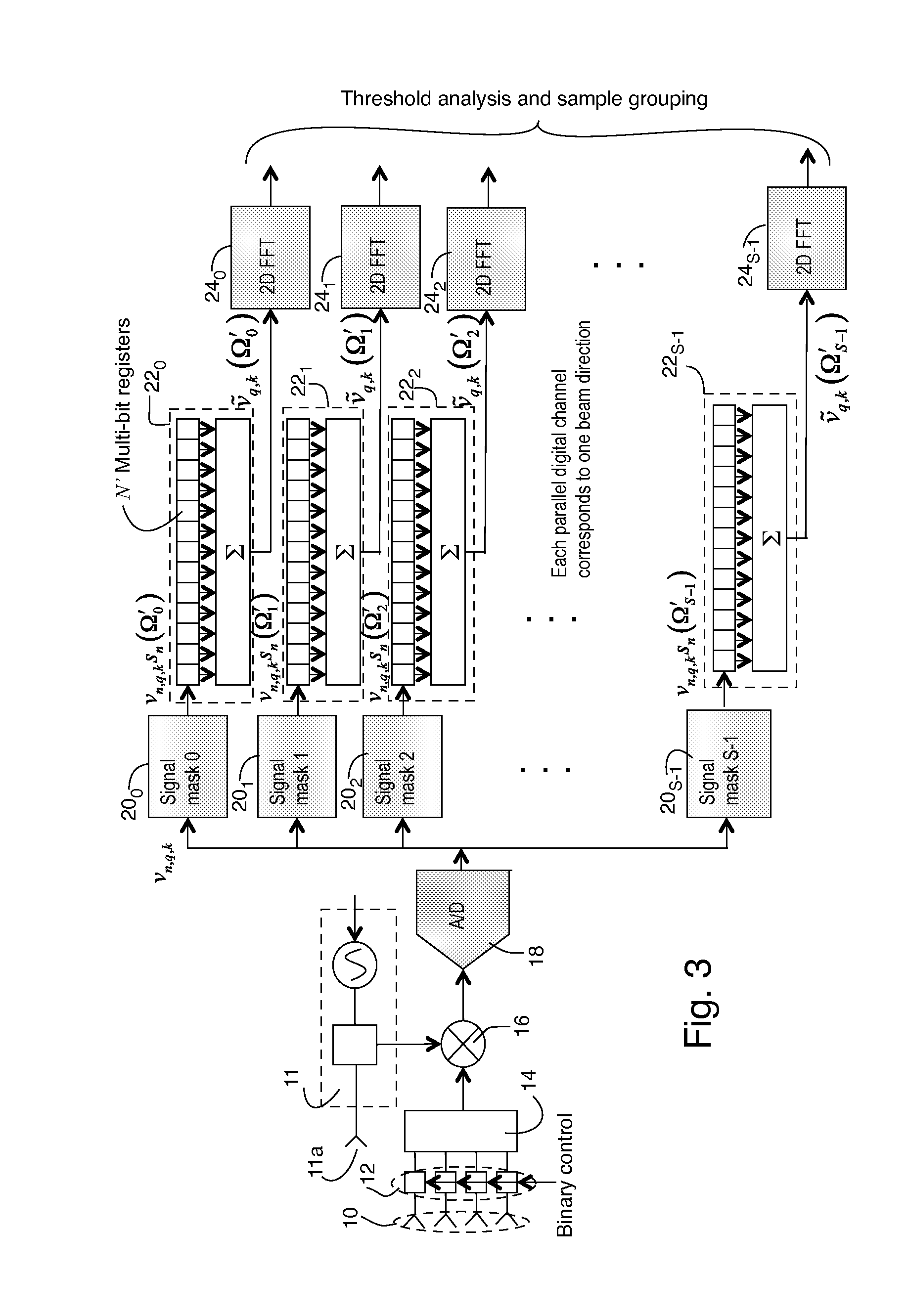Method and Apparatus for Reducing Noise in a Coded Aperture Radar
a coded aperture radar and noise reduction technology, applied in the field of coding for use with coded aperture radars, can solve the problems of reducing increasing the computational overhead of the type i car system, and limiting the sensitivity of the car compared to the conventional, so as to reduce the sensitivity and dynamic range of the radar
- Summary
- Abstract
- Description
- Claims
- Application Information
AI Technical Summary
Benefits of technology
Problems solved by technology
Method used
Image
Examples
Embodiment Construction
[0024]The technique described herein utilizes additional measurements made in a time period that is constrained by range and velocity discretization. As a result this technique requires a faster analog to digital converter (ADC) than the techniques used in the US patent applications referenced above. But an advantage compared to the US patent applications referenced above is that the residual ambiguity is lower than the previous applications.
[0025]FIG. 1 shows a block diagram of a CAR coded radar, with CAR coding being employed, for simplicity's sake, only on the receive portion of the radar. The possibility of using CAR on the transmitted signal as well is discussed towards the end of this patent. The radar is much simpler to design (and is much less complicated to implement, and thus less computationally expensive) if the CAR coding disclosed herein is employed at the only receiver side of the radar. As such, the receive only embodiments disclosed herein are preferred for a low co...
PUM
 Login to View More
Login to View More Abstract
Description
Claims
Application Information
 Login to View More
Login to View More - R&D
- Intellectual Property
- Life Sciences
- Materials
- Tech Scout
- Unparalleled Data Quality
- Higher Quality Content
- 60% Fewer Hallucinations
Browse by: Latest US Patents, China's latest patents, Technical Efficacy Thesaurus, Application Domain, Technology Topic, Popular Technical Reports.
© 2025 PatSnap. All rights reserved.Legal|Privacy policy|Modern Slavery Act Transparency Statement|Sitemap|About US| Contact US: help@patsnap.com



